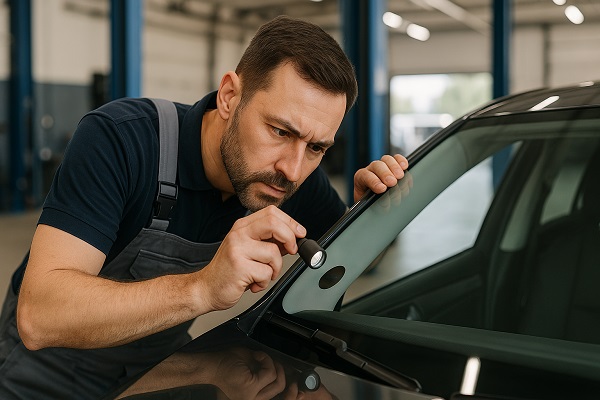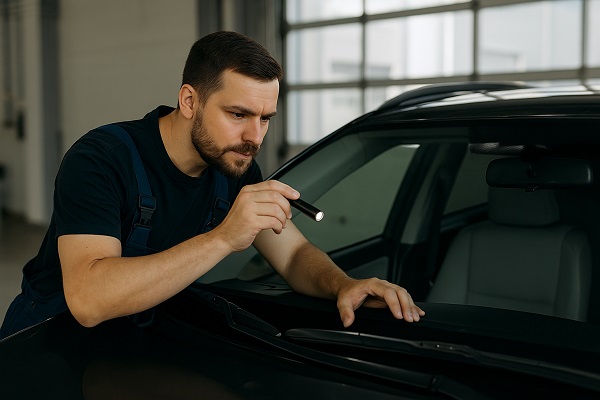A free windshield inspection can help drivers identify small issues before they turn into costly repairs or full replacements. Many auto glass shops and service centers offer this service to ensure your vehicle’s windshield is safe, clear, and structurally sound. Knowing what to expect during the process will give you confidence and help you make informed decisions about any recommended repairs.
Why Windshield Inspections Matter
Your windshield is more than just glass—it’s a critical safety component. It provides visibility, helps maintain the structural integrity of your vehicle, and plays a role in proper airbag deployment.
Cracks, chips, or other damage may look minor, but they can spread quickly or compromise your safety in an accident. A free inspection allows professionals to spot these issues early and recommend the right solution.
What Technicians Look For
During a free windshield inspection, technicians carefully evaluate several aspects of your windshield and surrounding components. Key points include:
- Chips and Cracks – Even tiny chips can spread, especially with changes in temperature or road vibrations.
- Edge Damage – Cracks near the edge of the glass are more likely to affect stability.
- Distortion – Subtle warping or wavy areas can affect visibility and cause eye strain.
- Seal and Trim – Loose seals or damaged trim can lead to leaks or reduced protection.
- Wiper Blade Marks – Scratches from worn blades may reduce visibility during rain.
Step-by-Step Process of a Free Windshield Inspection

Here’s a general breakdown of what happens when you bring your vehicle in for a complimentary inspection:
- Initial Visual Check
The technician does a quick walk-around and looks for visible cracks or chips. - Close Examination
Using light, magnifiers, or simple tools, the glass is checked more closely for subtle damage. - Structural Review
They check the glass edges, seals, and how the windshield sits in the frame. - Safety Assessment
Technicians consider whether the damage affects visibility, vehicle integrity, or airbag function. - Repair or Replacement Recommendations
Based on findings, they’ll explain whether repair is possible or if replacement is the safer option.
Common Issues Identified During Inspections
Free windshield inspections often uncover problems drivers weren’t aware of. Some common findings include:
- Small rock chips from road debris.
- Stress cracks caused by temperature changes.
- Improper previous repairs that may need correction.
- Signs of poor installation if the windshield was replaced before.
- Water leaks from failing seals.
Benefits of Getting a Free Windshield Inspection
Taking advantage of a free windshield inspection provides several benefits:
- Early Detection Saves Money – Small chips can often be repaired quickly and affordably.
- Enhanced Safety – You’ll know if your windshield is compromising airbag deployment or roof strength.
- Improved Visibility – Inspections identify issues that may be reducing clarity.
- Peace of Mind – You’ll leave knowing whether your windshield is safe or needs attention.
- Insurance Guidance – Many shops will help explain if damage may be covered by your auto insurance.
How Long Does It Take?
A typical free windshield inspection doesn’t take long. In most cases, it can be completed in 15–30 minutes, depending on the extent of the check and whether additional testing is required. Since many service centers accept walk-ins, it’s an easy process to fit into your day.
Questions to Ask During a Free Windshield Inspection

If you’re going in for an inspection, it’s a good idea to ask a few questions to get the most out of the visit:
- Can this chip be repaired instead of replaced?
- How long will the repair or replacement take?
- Is the repair covered by insurance?
- Will the glass used meet OEM or equivalent safety standards?
- How soon after repair or replacement can I safely drive?
Tips Before Your Appointment
- Clean the Windshield – A clean surface helps technicians spot damage more easily.
- Know Your Insurance Coverage – Some policies waive deductibles for repairs.
- Take Note of Damage – Point out any spots you’ve noticed so nothing gets overlooked.
- Schedule During Off-Peak Hours – You may get faster service if you avoid busy times.
Getting a free windshield inspection is a simple way to protect your safety and your wallet. By identifying chips, cracks, or seal problems early, you can often avoid a full replacement and maintain clear, safe visibility on the road. Regular inspections ensure your windshield remains strong, reliable, and ready to do its job when you need it most.
Content reviewed and published by SLP AutoGlass Editorial Team.

